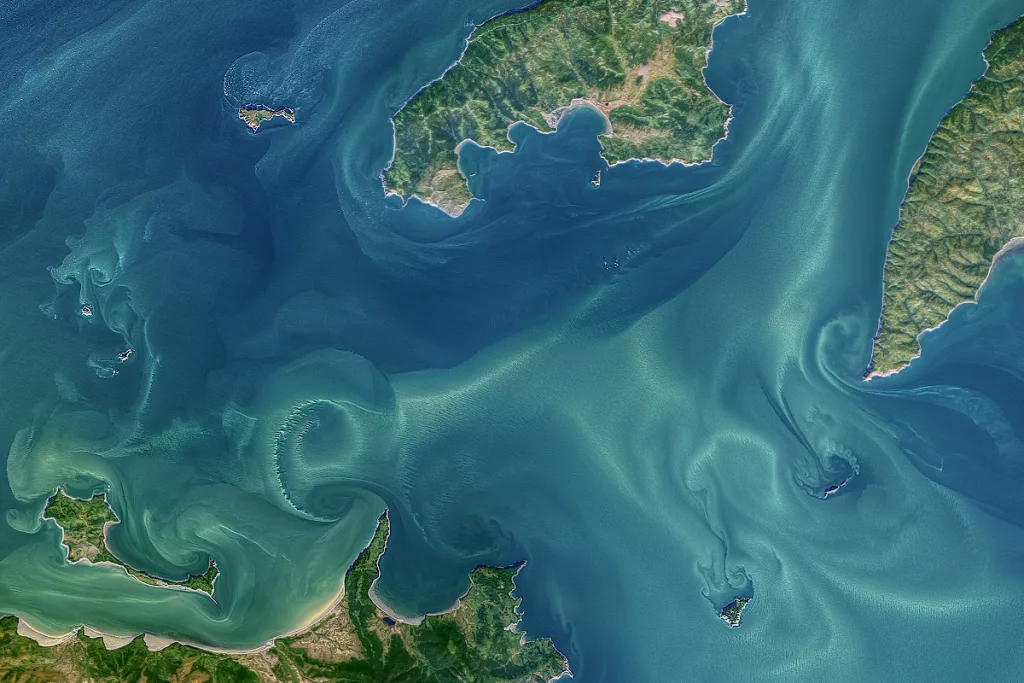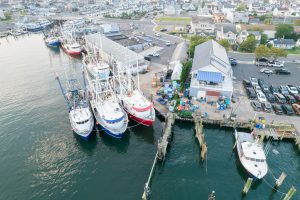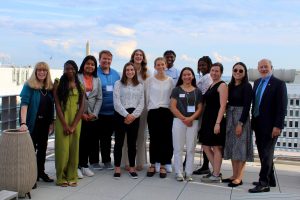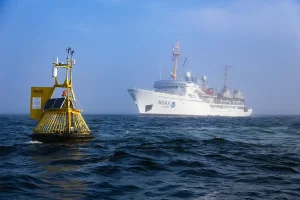The NOAA Ocean Acidification Program on behalf of the National Oceanographic Partnership Program (NOPP) announces $24.3M of funding aimed at bringing together academic researchers, federal scientists and industry to advance research in marine carbon dioxide removal. Funding supports research that expands understanding of various aspects of marine carbon dioxide removal approaches, risks and co-benefits including ocean acidification mitigation, and science needed to build regulatory frameworks for testing and scaling of marine carbon dioxide removal.
This funding opportunity is the first large-scale public and multi-partner investment of research specifically focused on a suite of marine carbon dioxide removal approaches. Knowledge from the research will assist in assessing the potential of marine carbon dioxide removal as a climate mitigation solution. These awards support 17 projects with partners from 47 institutions. The Inflation Reduction Act provided $14.36M funding for ten of the projects as part of the Investing in Coastal Communities and Climate Resilience provision under NOAA’s U.S. Integrated Ocean Observing System Office IRA priorities. This investment supports climate mitigation through research as part of President Biden’s Investing in America agenda.
An additional $10M provided by NOAA’s Ocean Acidification Program and Global Ocean Monitoring and Observing Program and NOAA’s appropriations for the NOAA’s National Oceanographic Partnership Program, the Department of Energy’s Office of Fossil Energy and Carbon Management and Water Power Technologies Office, Office of Naval Research, U.S National Science Foundation, and the ClimateWorks Foundation support seven more marine carbon dioxide removal research projects.
CLICK HERE FOR A FULL LIST OF PROJECTS
The NOPP marine carbon dioxide removal projects focus on understanding uncertainties and knowledge gaps for different marine carbon dioxide removal approaches including macroalgal cultivation, ocean alkalinity enhancement, enhanced weathering, and electrochemical approaches. The projects include lab experiments, modeling, field trials, and engaging communities to understand the impacts and effectiveness of various marine carbon dioxide removal strategies. Much of this work aligns with recommended research priorities of the NOAA Strategy for Carbon Dioxide Removal Research.
“The diversity of this research portfolio reflects how many open questions remain about marine carbon dioxide removal,” says Dr. Gabby Kitch, Carbon Dioxide Removal Lead with the NOAA Ocean Acidification Program and University Corporation of Atmospheric Research. “These projects address fundamental questions and can help us move the potential climate mitigation strategy from theory to active research.”
“NOPP serves as a catalyst for the federal ocean agencies to coordinate on large ocean research challenges including marine carbon dioxide removal, ” said Jeremy Weirich, co-chair of the NOPP Interagency Working Group. “I’m glad to see experts across the ocean community – from governments, academia, industry, and philanthropy – work together to maximize resources and funding to advance our climate mitigation knowledge beyond what any one partner could accomplish.”
Funded projects below
Carbon capture and ocean acidification mitigation potential by seaweed farms in tropical and subtropical coastal environments (Lead: Andreas Andersson, Funding: National Oceanographic Partner Program, NOAA Ocean Acidification Program)
Assessing chemical and biological implications of alkalinity enhancement using carbonate salts obtained from captured CO2 to mitigate negative effects of ocean acidification and enable mCDR (Lead: Andrew Dickson, Funding: NOAA Inflation Reduction Act)
Electrolysis-driven weathering of basic minerals for long-term ocean buffering and CO2 reduction (Lead: Burke Hales, Funding: Department of Energy Office of Fossil Energy and Carbon Management and Water Power Technologies Office)
Determining the Influence of Ocean Alkalinity Enhancement on Foraminifera Calcification, Distribution, and CaCO3 Production (Lead: Laura Haynes, Funding: NOAA Inflation Reduction Act)
Assessing efficacy of electrochemical ocean alkalinity enhancement at an existing outfall using tracer release experiments and oceanographic models (Lead: David Ho, Funding: NOAA Inflation Reduction Act, ClimateWorks Foundation)
Engaging U.S. commercial fishing community to develop recommendations for fishery-sensitive mCDR governance, collaborative research and monitoring, and outreach to fishing communities (Lead: Fiona Hogan, Funding: Office of Naval Research, ClimateWorks Foundation)
Coupling desalination with novel mCDR membranes (Lead: Katherine Hornbostel, Funding: Office of Naval Research)
Biotic calcification impacts on marine carbon dioxide removal additionality (Lead: Kelly Kearny, Funding: NOAA Inflation Reduction Act)
Tidal wetlands as a low pH environment for accelerated and scalable olivine dissolution (Lead: Kevin Kroeger, Funding: NOAA Inflation Reduction Act)
Multiscale observing system simulation experiments for iron fertilization in the Southern Ocean, Equatorial Pacific, and Northeast Pacific (Lead: Dennis McGillicuddy, Funding: NOAA Global Ocean Monitoring and Observing, NOAA Ocean Acidification Program, National Science Foundation)
Data requirements for quantifying natural variability and the background ocean carbon sink in mCDR models (Lead: Galen McKinley, Funding: NOAA Ocean Acidification Program, National Science Foundation)
Assessing the effects and risks of ocean alkalinity enhancement on the physiology, functionality, calcification, and mineralogy of corals and crustose coralline algae in the Pacific (Lead: Melissa Meléndez, Funding: Department of Energy Office of Fossil Energy and Carbon Management)
Assessing carbon dioxide removal and ecosystem response for an ocean alkalinity enhancement field trial (Lead: David Nicholson, Funding: NOAA Inflation Reduction Act)
An opportunity to study ocean alkalinity enhancement, CDR, and ecosystem impacts through coastal liming (Lead: Jaime Palter, Funding: NOAA Inflation Reduction Act)
Assessing the laboratory and field responses of diatoms and coccolithophores to ocean alkalinity enhancement (Lead: Adam Subhas, Funding: NOAA Inflation Reduction Act)
Developing a coupled benthic-pelagic biogeochemical model to evaluate the effectiveness of mCDR interventions (Lead: Cristina Schultz, Funding: NOAA Inflation Reduction Act)
Quantifying the efficacy of wastewater alkalinity enhancement on mCDR and acidification mitigation in a large estuary (Lead: Jeremy Testa, Funding: NOAA Inflation Reduction Act)






